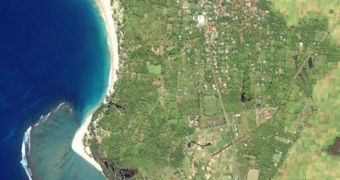Planetary scientists have discovered that tsunamis are able to produce disturbances in the Earth's atmosphere as well when they occur.
Until now, experts believed that the phenomenon only had devastating effects on the land masses it struck, but they are now beginning to turn their attention towards the sky.
The impression that tsunamis make in the air is still poorly understood, but the phenomenon at least has a name now. It has been dubbed “atmospheric gravity wave.”
A better understanding of these waves could lead to significant improvement of tsunami warning networks, which could in turn help save hundreds of thousands of lives, Our Amazing Planet reports.
“The tsunami very effectively generates atmospheric gravity waves, and because they're fast, those waves can effectively travel to the upper atmosphere,” explains expert Michael Hickey.
He holds an appointment as an associate dean at the Embry-Riddle Aeronautical University in Florida, and is also a professor of physics at the university.
The scientist explains that he and his group are using Global Positioning System (GPS) data to track the atmospheric gravity wave through the Earth's ionosphere, a layer of the atmosphere some 50 to 300 miles above the surface.
One of the main phenomenons that take place when these waves hit the ionosphere is that the particles which can be regularly found in the atmospheric layer are disturbed.
This can cause interference with GPS data being transmitted to and from satellites in Earth's orbit. Scientists say that these anomalies could prove useful in helping them pinpoint the point of origin for tsunamis.
Hickey says that an early warning system is the main goal in this line of research, but cautions that practical applications are still years away from implementation.
According to the latest studies on these waves, it would appear that they cause only minute disturbances in the air above the ocean surface, displacing molecules by about 3 or 4 centimeters.
But the disturbances increase in size with altitude, explain researchers at the NASA Jet Propulsion Laboratory (JPL), in Pasadena, California, led by David Galvan.
“Because the atmosphere decreases in density as you go up, the air molecules can move much farther without bumping into each other,” Galvan says.
Experts are now gearing up to begin large scale studies of these phenomena, in a bid to make more sense of how tsunamis are produced, and on their effect on the world.

 14 DAY TRIAL //
14 DAY TRIAL //